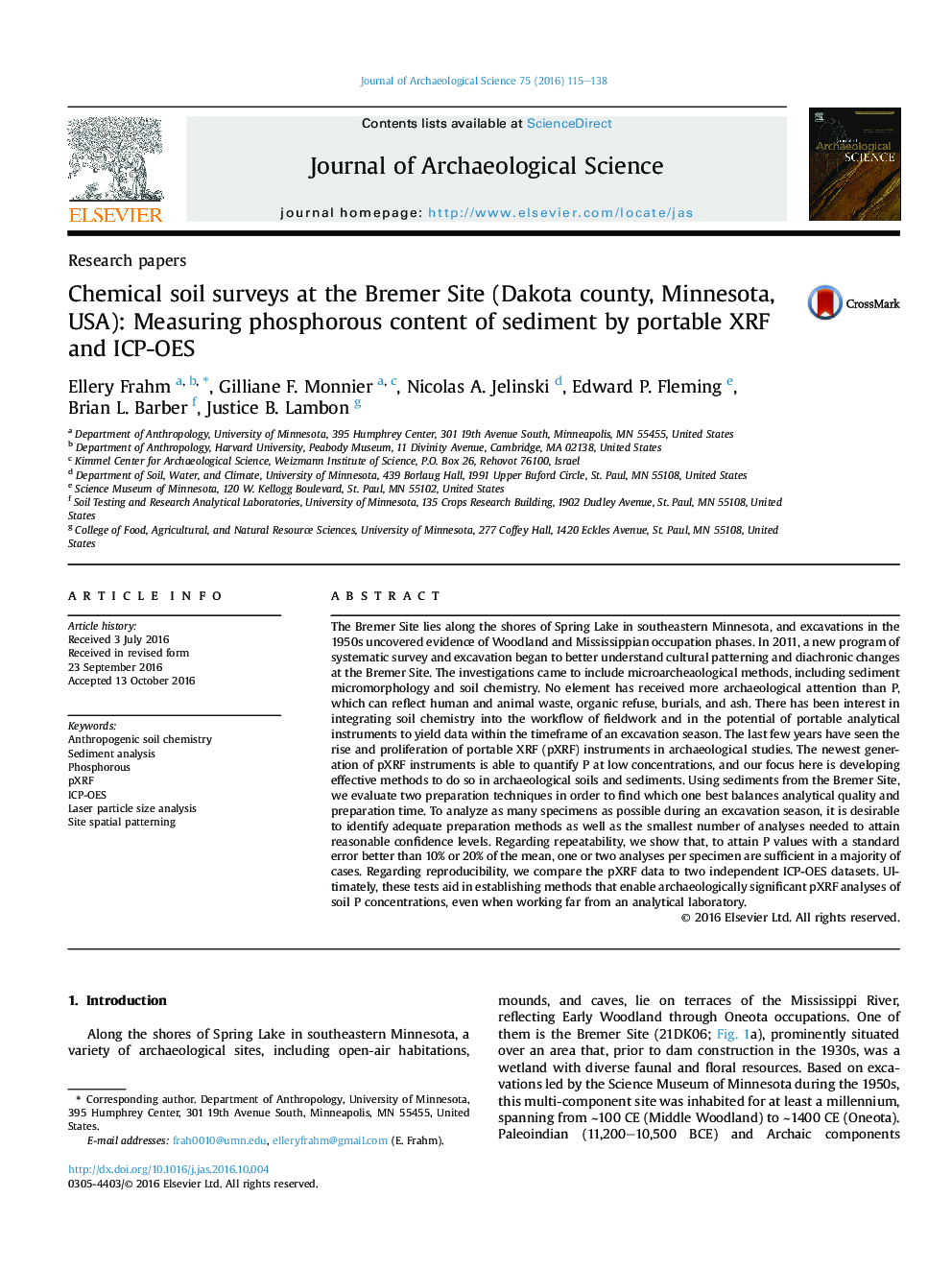| Article ID | Journal | Published Year | Pages | File Type |
|---|---|---|---|---|
| 5112122 | Journal of Archaeological Science | 2016 | 24 Pages |
Abstract
The Bremer Site lies along the shores of Spring Lake in southeastern Minnesota, and excavations in the 1950s uncovered evidence of Woodland and Mississippian occupation phases. In 2011, a new program of systematic survey and excavation began to better understand cultural patterning and diachronic changes at the Bremer Site. The investigations came to include microarcheaological methods, including sediment micromorphology and soil chemistry. No element has received more archaeological attention than P, which can reflect human and animal waste, organic refuse, burials, and ash. There has been interest in integrating soil chemistry into the workflow of fieldwork and in the potential of portable analytical instruments to yield data within the timeframe of an excavation season. The last few years have seen the rise and proliferation of portable XRF (pXRF) instruments in archaeological studies. The newest generation of pXRF instruments is able to quantify P at low concentrations, and our focus here is developing effective methods to do so in archaeological soils and sediments. Using sediments from the Bremer Site, we evaluate two preparation techniques in order to find which one best balances analytical quality and preparation time. To analyze as many specimens as possible during an excavation season, it is desirable to identify adequate preparation methods as well as the smallest number of analyses needed to attain reasonable confidence levels. Regarding repeatability, we show that, to attain P values with a standard error better than 10% or 20% of the mean, one or two analyses per specimen are sufficient in a majority of cases. Regarding reproducibility, we compare the pXRF data to two independent ICP-OES datasets. Ultimately, these tests aid in establishing methods that enable archaeologically significant pXRF analyses of soil P concentrations, even when working far from an analytical laboratory.
Related Topics
Physical Sciences and Engineering
Materials Science
Materials Science (General)
Authors
Ellery Frahm, Gilliane F. Monnier, Nicolas A. Jelinski, Edward P. Fleming, Brian L. Barber, Justice B. Lambon,
